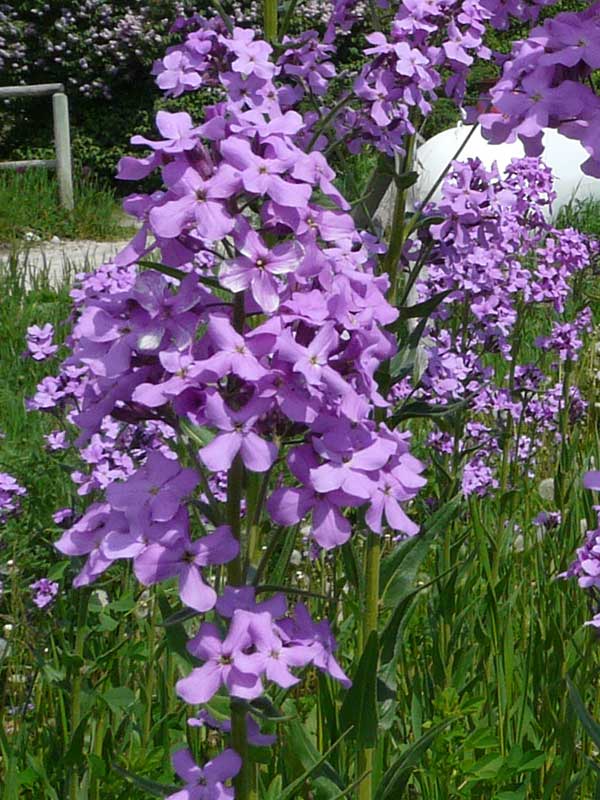Hesperis matronalis / dame’s rocket
- biennial, 3+ feet tall in second year
- 4-petaled flowers, especially purple or lavender
- large inflorescences with many flowers
- garden escapee
- roadsides, waste places
Also known as: damask violet, dame’s-violet,dames-wort, dame’s gilliflower, night-scented gilliflower, queen’s gilliflower, rogue’s gilliflower, summer lilac, sweet rocket, mother-of-the-evening, winter gilliflower
Dame’s rocket is currently rare in the Valley outside of gardens, but where you do find it, it can occupy a fair amount of ground. This non-native plant is undemanding with respect to soils, light and water, and it self-seeds quite well. This means that it can take over an area quickly, crowding out native plants. If you care about “native” but also want a wildflower garden, check carefully; many “native wildflower” mixes include dame’s rocket.
When you do find it, it is difficult to mistake for anything else. It is certainly the only large flowered brassica/crucifer around and it isn’t yellow. You could mistake if for some species of phlox, but they all have 5 petals while all brassicas have 4.
Dame’s rocket inflorescences are quite showy, in a variety of possible colors – purple, lavender, mauve or even white. The petals end in a claw-like point. They appear beginning in mid-spring (mid-June in the Valley) and flowering can continue into August. The inflorescences are large, showy terminal racemes that continue elongating as the blooms appear. Fruiting also happens while new blooms are arising; the fruit is a long silique… basically, long, thin pods.
The petals of dame’s rocket have a pleasant scent, more so toward evening. That is, apparently what the Greek word “hesperis” means, evening. As for the “rocket” bit, many brassicas have this in their name; it’s derived from the Latin “eruca” for cabbage-like plants. So, if you say something isn’t “rocket science”, it could simply mean it doesn’t involve cabbages.
Dame’s rocket can also be quite tall, on the order of 3+ feet. It has hairy stems, but you probably would never look at those. The height is all developed in the second year, as this is a biennial or short-lived perennial. In the first year, the plants produce only a “mound”, or basal rosette, of foliage.
As a non-native, potentially invasive weed, dame’s rocket is commonly found in roadside ditches, dumps and in open woodland settings, where it is noticed when in bloom.
| Color | |
|---|---|
| Family | |
| Blossom size | |
| Inflorescence size | |
| Inflorescence type | |
| When? | |
| Where? |

